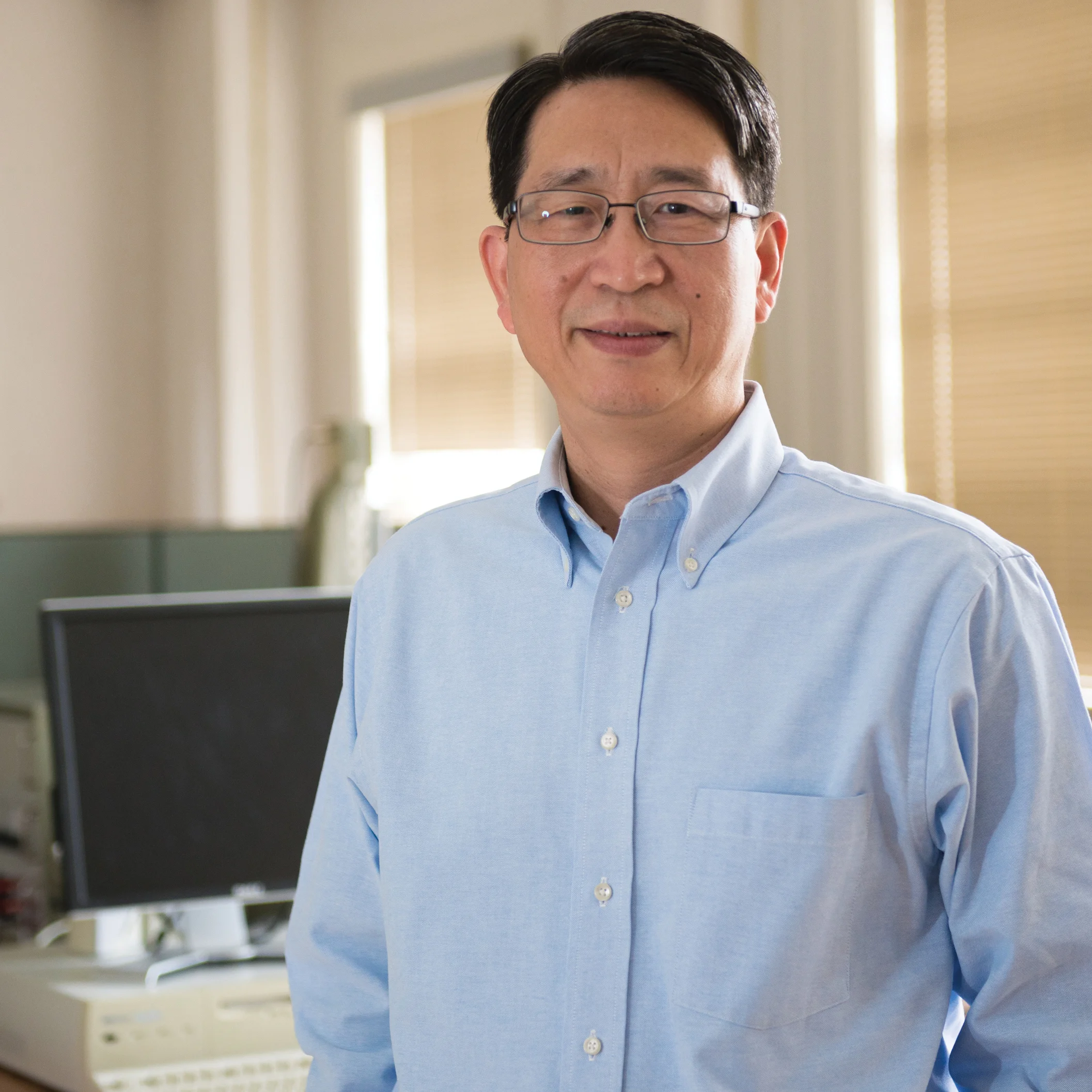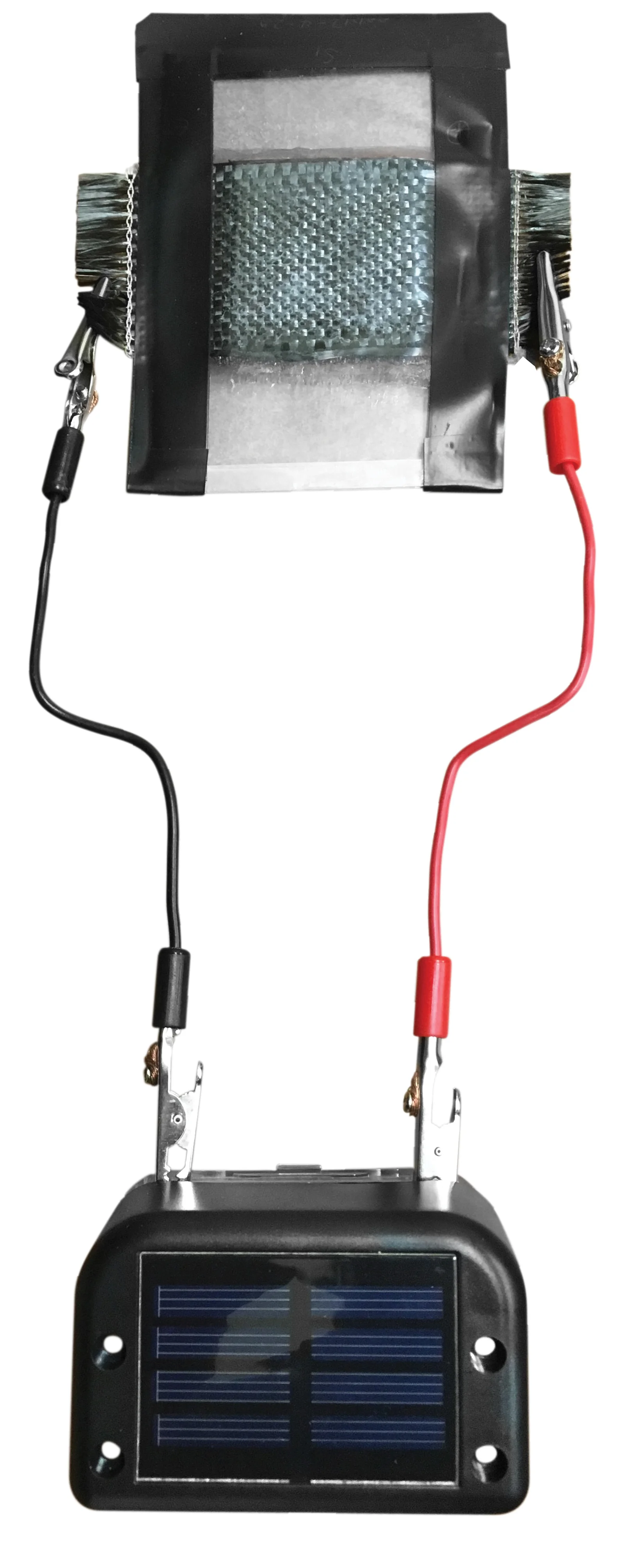Futuristic Fabric
Thanks to new technology under development in Gearing Hall by Jonathan Chen, professor of textiles and apparel, it may soon be possible to charge medical equipment from a tent or plug your cell phone into your backpack. Chen recently patented a supercapacitor (i.e., a power-storing device that acts as an alternative to a rechargeable battery) constructed from fabric.
“Smart clothing stores energy within fabric and gives us many new options over the traditional, metal-based supercapacitor,” Chen says. “Soldiers, emergency workers – the possibilities of use are endless with so many people going into remote areas without a steady energy supply.”
To build the supercapacitor, Chen sandwiches different layers of carbon-based, commercially available fabric between two conductive units. A lightweight mesh and layers of two electrodes – positive and the negative ends of the supercapacitor – complete the design. Treated with special chemical baths, the layers either conduct a current or store a charge.
Once attached to a power source, like a solar cell, the supercapacitor stores energy.
Chen’s tests show that a fully charged two-inch square of fabric holds one volt of energy. In other words, a few square inches of fabric could run an LED light for a few hours.
“So far, the supercapacitor can recharge 10,000 times without much of a loss of charge,” Chen says. “Moving or damaging the fabric does not affect performance. This material is super strong and reliable so that even in battle – marked with a bullet hole – the battery should still function well.”


